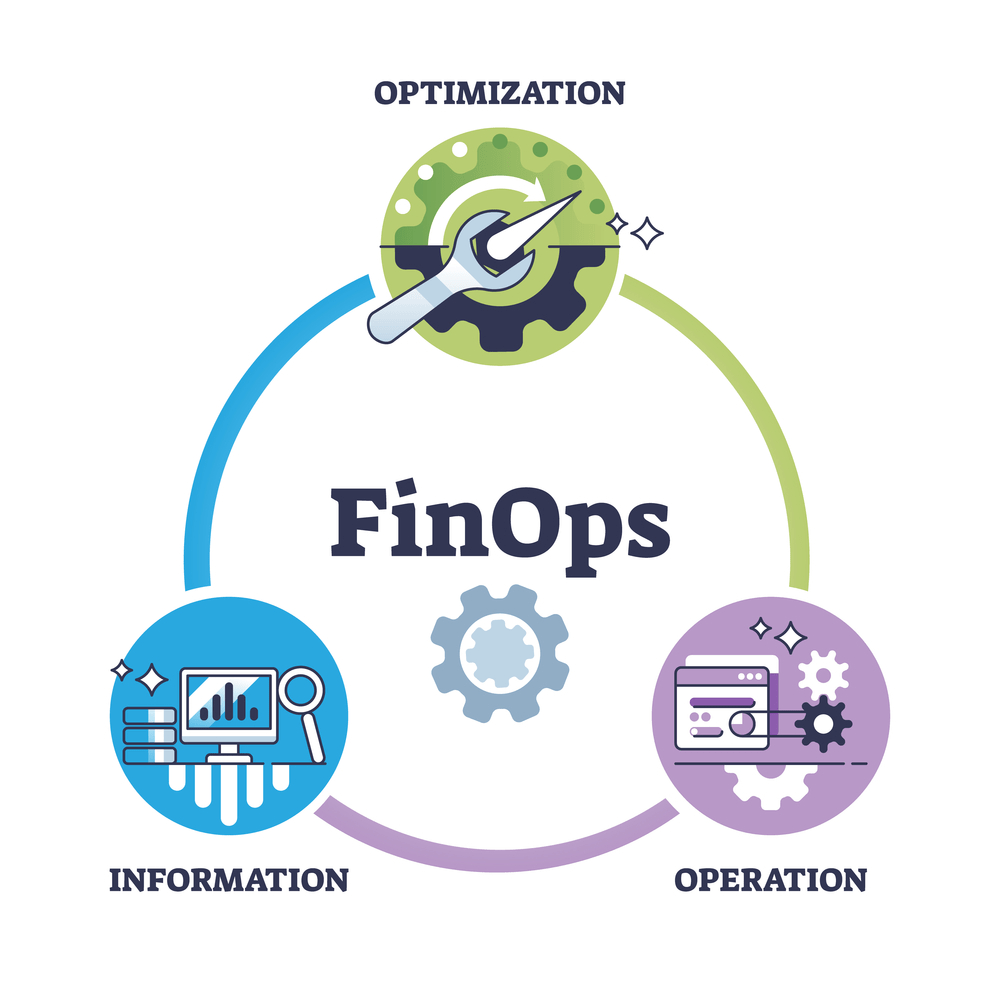Migrating workloads, applications, and data from on-prem hosting to the cloud offer the potential to drive cost savings for your organization, but it requires governance and continuous cost optimization. Undisciplined use and operation of cloud investments can lead to cost overruns. Costs associated with cloud usage, when not managed vigilantly, are often unexpectedly high. To make it worse, the complexity of cloud billing also makes it difficult for users to understand the expense incurrence and allocation.
According to Gartner, through 2024, 60% of infrastructure and operations (I&O) leaders “will encounter public cloud cost overruns that negatively impact their on-premises budgets”. Implementing effective cloud spend governance, monitoring, analytics, reporting, and optimization has become an urgent task. The solution? A Cloud FinOps practice armed with data-driven intelligent solutions for cloud cost governance, cost visibility, and cost optimization.

What is Cloud FinOps?
FinOps is an evolving cloud financial management discipline and cultural practice that enables organizations to get the maximum business value of their cloud investments by helping engineering, finance, technology, and business teams collaborate on data-driven spending decisions. IDC predicts that by the end of 2023, 80% of organizations using cloud services “will establish a dedicated FinOps function to automate policy-driven observability and optimization of cloud resources to maximize value.”
A sophisticated cloud FinOps foundation typically combines a centralized team with an engaged array of cloud stakeholders positioned throughout the organization — all taking ownership and financial accountability of their own cloud usage and making informed, data-driven decisions based on the business value that the cloud can offer.
Strategy for Smart Cloud Financial Management
Smart cloud spend management enables organizations to optimize cloud costs and usage through continuous analysis, automation, and governance. It implements policies, budgets, and alerts to control and govern usage and spending. It provides granular visibility into Cloud consumption and costs through monitoring, analytics, cost allocation, and visualization. It helps reduce overall cloud costs through resource optimization, resource rightsizing, waste elimination, and CSPs’ savings plan optimization.
Here we highlight a few of the ways organizations can apply smart cloud spend management to reduce cloud costs and improve cloud efficiency:
Identify idle and orphaned resources.
The ease of provisioning instances and containers in the cloud is a double-edged sword, especially within large cross-functional teams without mature governance controls. It is all too easy to provision resources and then leave them running even when they are no longer needed.
Additionally, errors in deployment templates can deploy unneeded resources or leave them orphaned after a post-job cleanup. Cloud management tools can be used to identify unused and inactive resources by looking at network traffic, CPU load, and similar data points. Even better are tools that deploy advanced analytics and automation to monitor resources continuously, and automatically shut down those cloud computing services no longer in use.
Optimize purchasing strategies.
Cloud platform vendors offer a wide array of usage-based pricing models to address cloud costs. With these models, the same cloud computing resource can have a vast array of price points, depending on factors such as region, data center zone, pricing plan, and upfront commitments.
On-demand, reserved instances, convertible reserved instances, preemptible instances, spot instances, and savings plans are just some examples of the compute pricing options offered in public cloud infrastructure. The savings possible from commitment-based strategies can be enormous because prices across these cloud FinOps options can vary dramatically.
For example, reserved instances can be 75% less expensive than on-demand instances, and spot instances are up to 90% less expensive than on-demand instances. When it comes to reserved instances and cost allocation, many companies use a centralized approach for procurement so that all business units and projects will benefit from lower pricing. Smart cloud spending practice observes and analyzes the utilization of cloud resources and uses data analysis for planning instance, reservation and savings plans.

Leverage storage tiering.
For most organizations, cloud storage cost is the largest portion of cloud expenses. But users often ignore the fact that cloud storage resources are available in a wide range of options with different latency, throughput, and cost characteristics.
Storing data in the best-fit storage tier and moving data between tiers when appropriate can significantly reduce cloud storage costs and will get better business value. For example, recently created data in active use may require the low latency and sustained throughput provided by solid-state disks (SSDs) and provisioned throughput, while “warm” data can be stored on lower-cost spinning disks.
Additional storage tiers such as object storage (e.g., Amazon S3, Azure Blob Storage or Google Cloud Storage) can be leveraged for use cases where latency requirements are less demanding, and cold storage tiers can be used for long-term archive data. The storage lifecycle policies provided by cloud platforms can be used to automate migration of data between tiers as well. Smart cloud spend management automatically identifies which storage does not have lifecycle policies applied and applies lifecycle policies on storage resources in bulk.
Real-time Spend Observability
Smart cloud spend management practice analyzes pricing and utilization data in real time on instances, storage, networking, containers, serverless functions, scaling groups, services, etc. and provides visualized views on cost trends and utilization trends for each resource. It provides cost mapping between organizational units and budget governance and cost allocation reports for charge-back or show-back, allowing better cloud financial management.
Anomaly Detection
Smart cloud spend management provides automated alerting for abnormally high usage or when exceeding the budget threshold. It detects rogue resources within hours rather than at the end of the month. It also detects unnecessary and unapproved spending. It identifies untagged resources and resources wrongly tagged for better resource and cloud financial management.

Cloud Cost Optimization Through Rightsizing
Smart cloud spend management applies advanced analytics and machine learning to study the usage pattern of resources, predict fluctuating demands and costs, and recommend resource selection using predictive analytics of price/performance ratios. It provides recommendations on resource rightsizing and resource scheduling based on the continuous analysis of application performance and cloud resource configuration and utilization and automates the workflow for change implementation.
Want to go deeper on cost-saving FinOps strategies? Connect with our Cloud Services team today!


